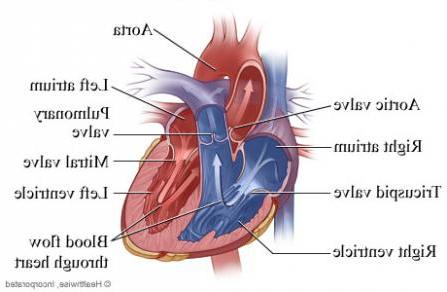本页包含以下部分:
什么时候手术修复或置换主动脉瓣是可取的?
主动脉瓣的修复或置换是如何完成的?
这种手术的风险和好处是什么?
典型的复苏包括什么?
什么时候手术修复或置换主动脉瓣是可取的?
你的 主动脉瓣 is several little flaps of tissue that control the flow of blood from your heart's left ventricle into your aorta, 人体最大的动脉. 如果它严重患病或有缺陷, 考虑手术修复的可能性是可取的.
如果你被诊断出主动脉瓣受损, your surgeon will evaluate the specifics of your situation and help you weigh the risks of cardiac surgery against the risks of continuing to manage the disorder with medication and other nonsurgical treatments. 在某些情况下, 尤其是如果你的症状不严重的话, 可以通过改变生活方式和/或药物治疗来控制. 然而, a disorder of the 主动脉瓣 that is severe or causes symptoms can only be fixed surgically; nonsurgical options will at best just delay the need for surgery.
你和你的外科医生应该决定手术的时机吗, keep in mind that our cardiac surgeons have considerable expertise in all the proven options for the surgical repair or replacement of damaged 主动脉瓣s. 主动脉瓣手术是很常见的.
主动脉瓣的修复或置换是如何完成的?
有很多方法可以修复或替换受损或有缺陷的主动脉瓣. The two primary matters your surgeon will consider are whether your valve can be repaired or must be replaced, 以及哪种手术方法效果最好.
在某些有限的情况下, 特别是如果你的阀门漏水而不是堵塞, 利用瓣膜瓣瓣上的小组织贴片进行修复是可能的.
在大多数情况下,对受损的主动脉瓣进行手术, 然而, 更换而不是修理将是最明智的选择. 有两种主要的替换阀门. Factors such as your age 以及你的整体健康状况 will affect which kind is most appropriate:
- 机械阀门 是由非常耐用的人造材料制成的吗, 包括钛, 碳, 聚酯, 涤纶和特氟龙. They are typically very long-lasting; 然而, use of a mechanical valve usually requires patients to take blood-thinning medication (often referred to by the brand name of Coumadin) for the rest of their lives.
- 生物瓣膜, 也称为组织瓣膜或生物假体瓣膜, 是由动物组织制成的吗, 通常来自猪或牛. They do not usually necessitate the lifelong use of blood-thinning medication; 然而, 生物瓣膜的寿命是有限的, 平均10到20年, 因此,将来可能需要进行第二次阀门更换手术. 生物瓣膜在大多数主动脉瓣置换术中使用.
The appropriate surgical approach will depend on such factors as whether your valve can be repaired or must be replaced, 破损程度如何?, 以及你的整体健康状况. 你的 surgeon will determine which of the following procedures is most appropriate in your particular situation:
- 开胸手术 to repair or replace an 主动脉瓣 involves making a 7- to 10-inch incision over the middle of the sternum, 或胸骨, 然后分开胸骨,进入心脏. 在某些情况下,可能采用侵入性较小的选择,包括稍小的胸骨切口. 然后对损坏的阀门进行修理或更换.
在手术过程中有必要让你的心脏停止跳动, so the operation can be performed on a motionless and bloodless field; while your heart is stopped, a device known as a heart-lung bypass machine will take over your heart's function and maintain your circulation. 偶尔, 在涉及主动脉的复杂手术中, you may also be put into a state known as hypothermic circulatory arrest; this involves lowering your body temperature to significantly slow your body's cellular activity, 让你的血液流动暂时停止. (“体温过低”一词来自希腊语,意思是“低热量”,而“循环停止”的意思是你的血液循环停止了, 或停止.)在其他情况下, 一种被称为腋窝插管(或插入引流管)的技术, 被称为套管, 在你腋窝的动脉里, or axilla) can allow aortic surgery to be performed without hypothermic circulatory arrest; this advance may reduce the incidence of postoperative strokes and neurological deficits.
- 经导管主动脉瓣置换术 是一个相对较新的, minimally invasive option that may be appropriate in patients judged to be at high-risk for traditional 主动脉瓣 surgery. It involves making a couple of tiny incisions (often just 1 to 2 inches) in blood vessels either under your left breast or in your groin; inserting long, thin tubes known as a catheters through the vessels to the 主动脉瓣; and then—without removing the defective valve—using X-ray guidance to see inside your heart and long, 细的器械穿过导管,在瓣膜开口放置人工瓣膜. We have participated since its inception in a national clinical trial of TAVR known as the PARTNER Pivotal Trial.
在适当的情况下, TAVR can sometimes be done with the patient under local rather than general anesthesia; in addition, 它通常不需要使用心肺旁路机. 因为这种方法完全避免了打开胸腔的需要, 它通常会导致更快的愈合. - 复合移植手术 如果你的主动脉瓣受损,这是一个合适的选择吗, but the part of your aorta closest to the heart (known as the aortic root) is affected by either an aneurysm or a dissection. This procedure involves both replacing the 主动脉瓣 with either a mechanical or a biological valve and repairing or replacing the damaged portion of the aorta itself.
这种手术的风险和好处是什么?
It is important to keep in mind that every medical choice involves a trade-off between risks and benefits—whether it is to undergo surgery, 服药, 或者甚至只是仔细监控一种情况(一种被称为“观察等待”的选择)。.
如果主动脉瓣受损或有缺陷, deciding whether surgery is advisable involves balancing the risks involved in any heart surgery against the risk that continuing to manage the disorder with medication and other nonsurgical treatments may result in progressive damage to your heart and circulatory system. 例如, patients with a severely blocked (stenotic) 主动脉瓣 who have fainted or whose symptoms include shortness of breath or chest pain have a five-year survival rate of less than 30% without surgery.
手术的风险要低得多. 不同病人的风险会有所不同, 取决于年龄和整体健康状况等因素, 但是平均死亡率, 或者死亡的风险, 从开放手术到修复或更换主动脉瓣的比例是1%到3%. 这种手术还与1%到3%的血栓风险有关,血栓会导致严重的中风. 此外,大约1%的患者可能需要人工起搏器. 而且任何外科手术都有很小的并发症风险,比如感染.
病人 who smoke can reduce their risk of complications if they stop smoking at least 2 to 4 weeks before their surgery (it is best not to quit immediately before having heart surgery, 然而, 因为当人们戒烟时,他们经常会有短期的支气管漏, 或者是呼吸道分泌物过多, which makes them cough a lot—and coughing a lot when you have just had heart surgery is not a good idea).
The benefits of successful surgery are considerable; repair or replacement of an 主动脉瓣 usually fixes the damaged valve and relieves all the patient's symptoms. 绝大多数的病人, 一旦他们恢复, 感觉比手术前好多了, 能呼吸得更好吗, 并且能够恢复他们想要从事的任何活动.
典型的复苏包括什么?
一个典型的心脏直视手术需要4到6个小时, in some cases up to 8 hours; patients are then maintained under general anesthesia for an additional 4 to 6 hours. 如果他们的心脏运转良好,没有过多的出血, 他们可以从麻醉中恢复过来,并拔掉呼吸管. Most patients stay in the ICU until midday of the day after their procedure; if they continue to do well, the drainage tubes in their chest can then be removed and they can be moved to a regular hospital bed later that day.
典型的住院时间为4至7天. 在这一点上, 绝大多数病人都能回家, 在探访护士服务的支持下, though about 15% to 20% may need to spend some time in a rehab facility for more extensive rehabilitation. 出院后, patients are advised not to drive for about three weeks and not to lift anything heavier than 5 pounds for about 6 weeks. 超过这个点,他们可以恢复他们想要的任何活动.
病人往往会惊讶于控制疼痛是多么容易. 手术后的第二天, 大多数病人不用静脉注射止痛药物就会感到舒服, 只服用口服止痛药, 绝大多数人出院后只服用泰诺或布林.
在需要微创手术的情况下, both the length of the operation and the recovery period are typically shorter (and much shorter in the case of TAVR surgery).
审查页面:2018年6月26日
编辑:Jock McCullough, MD
